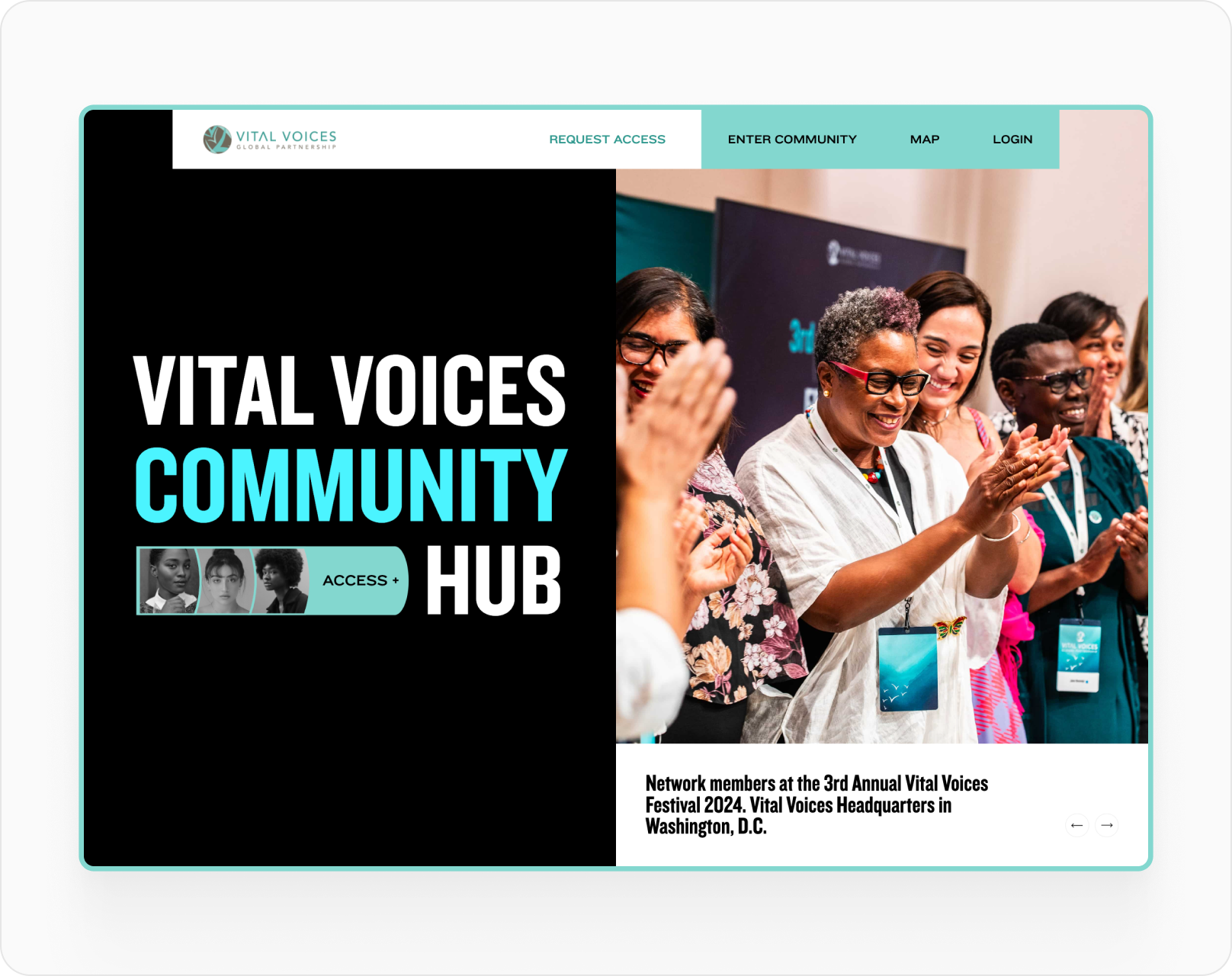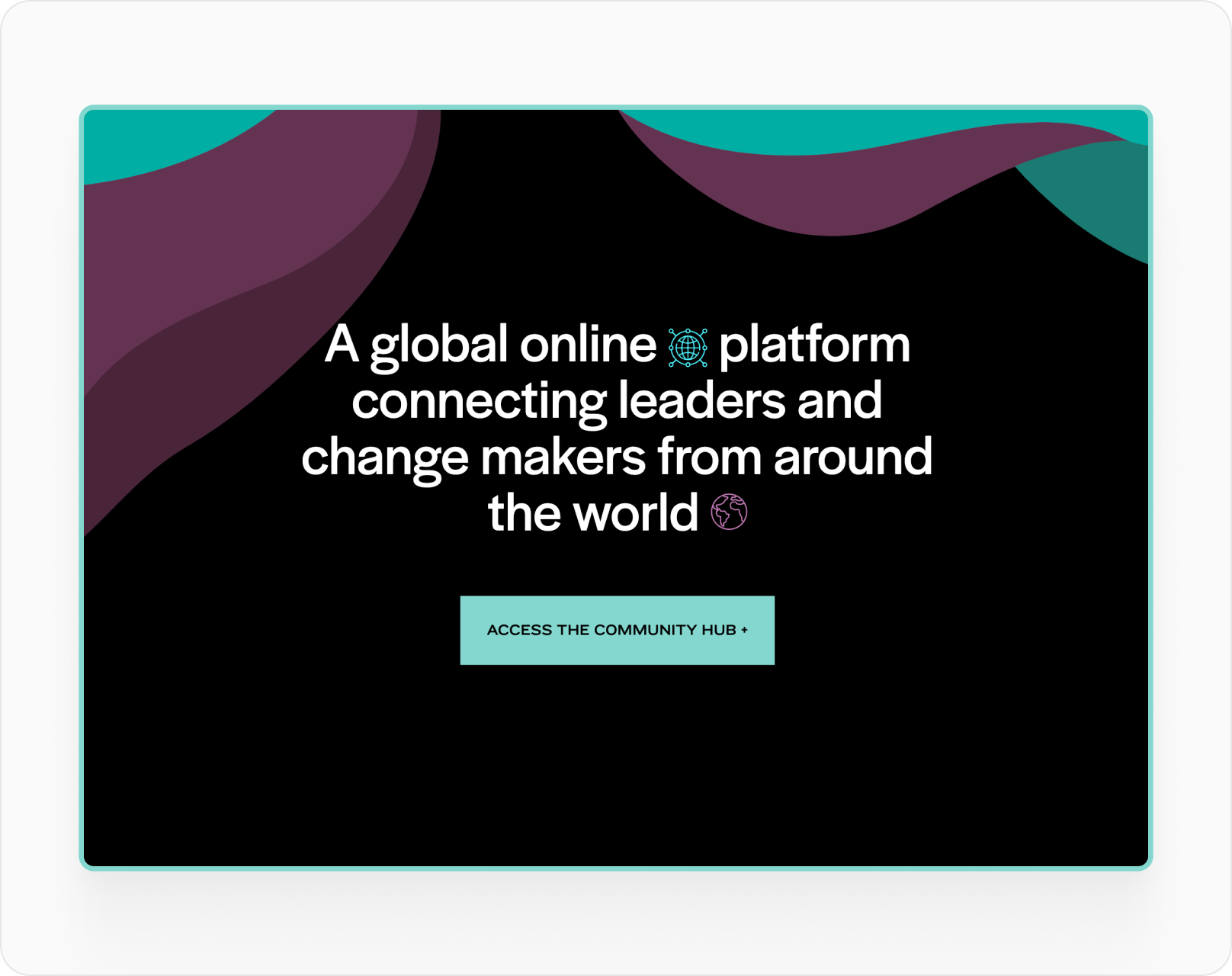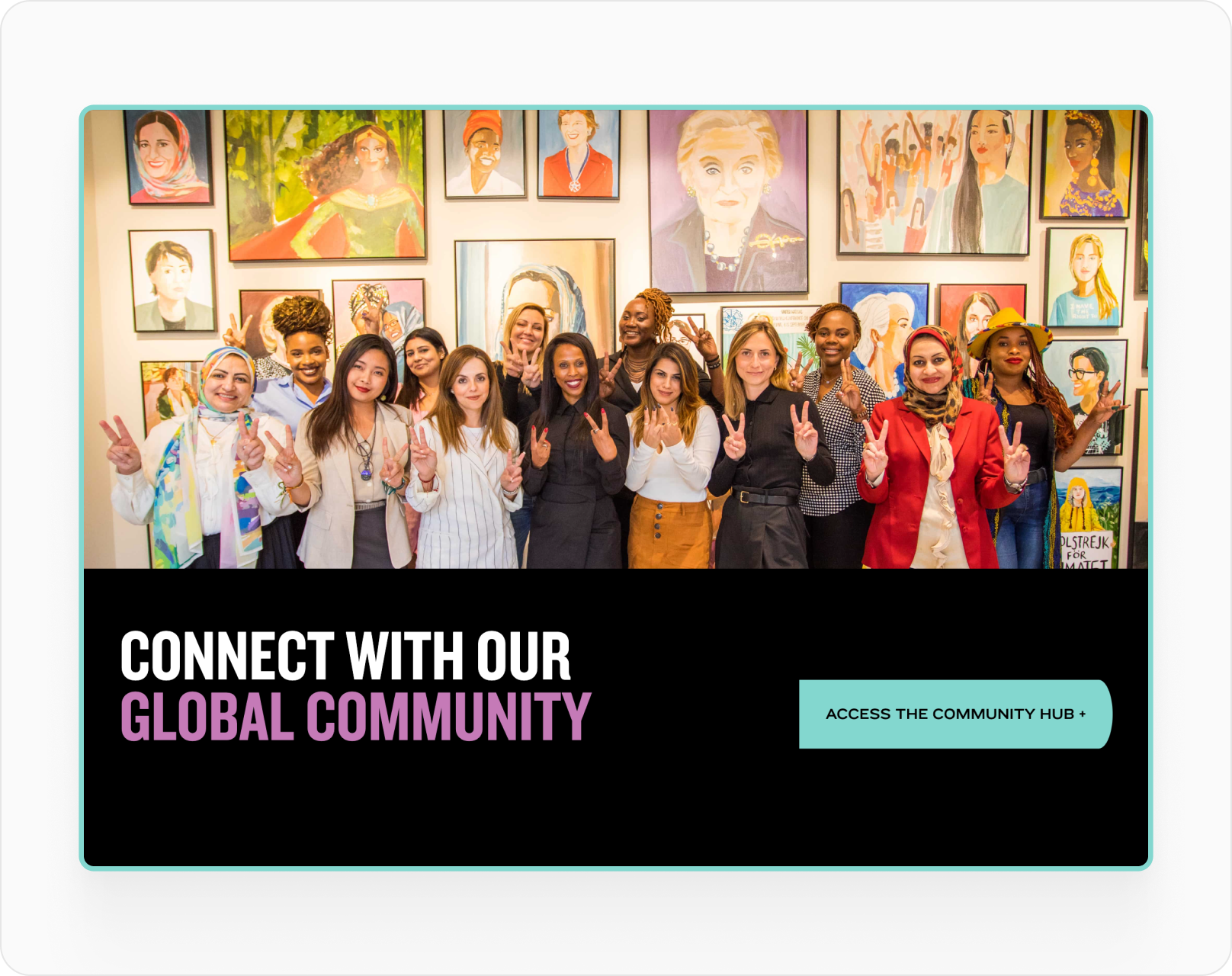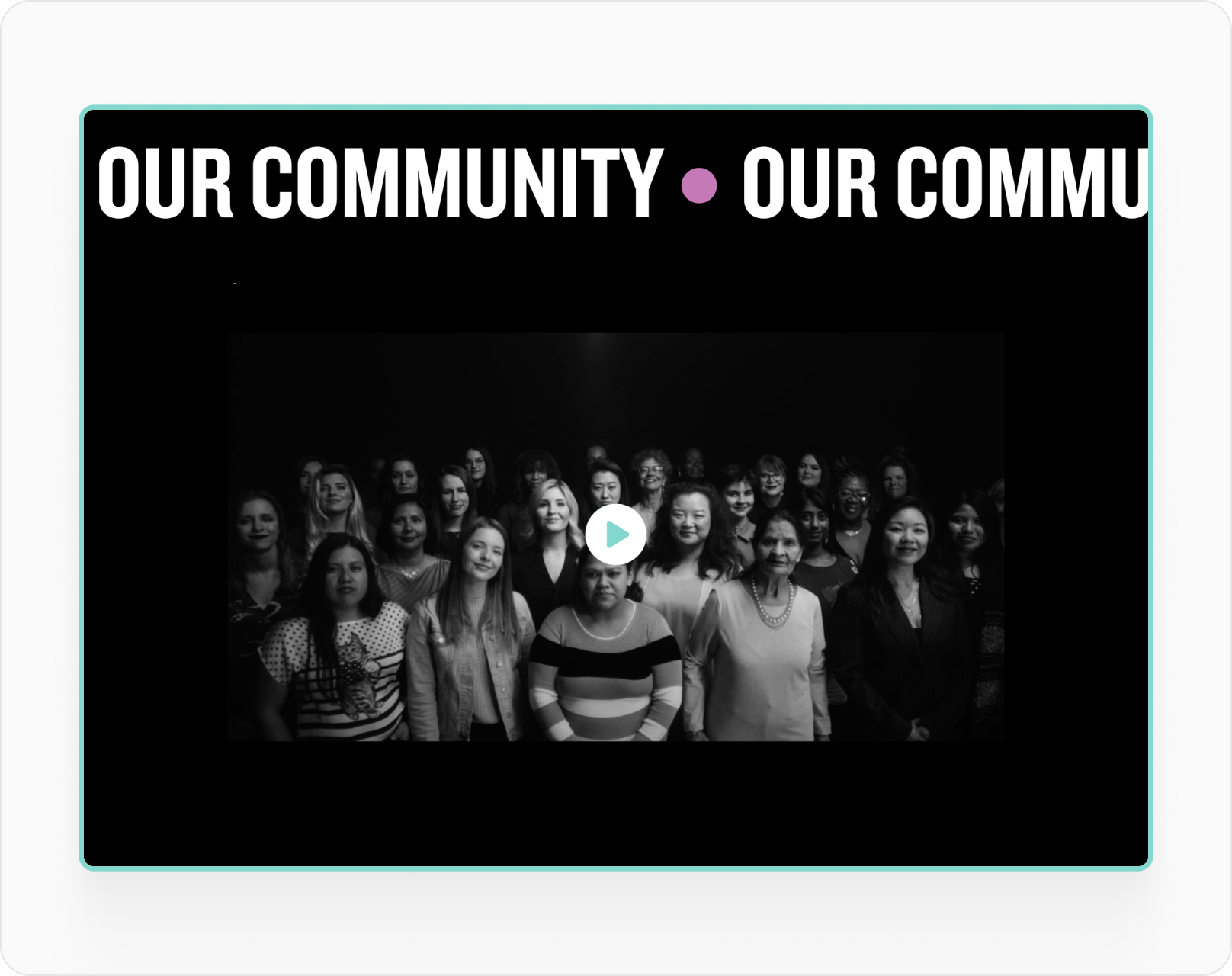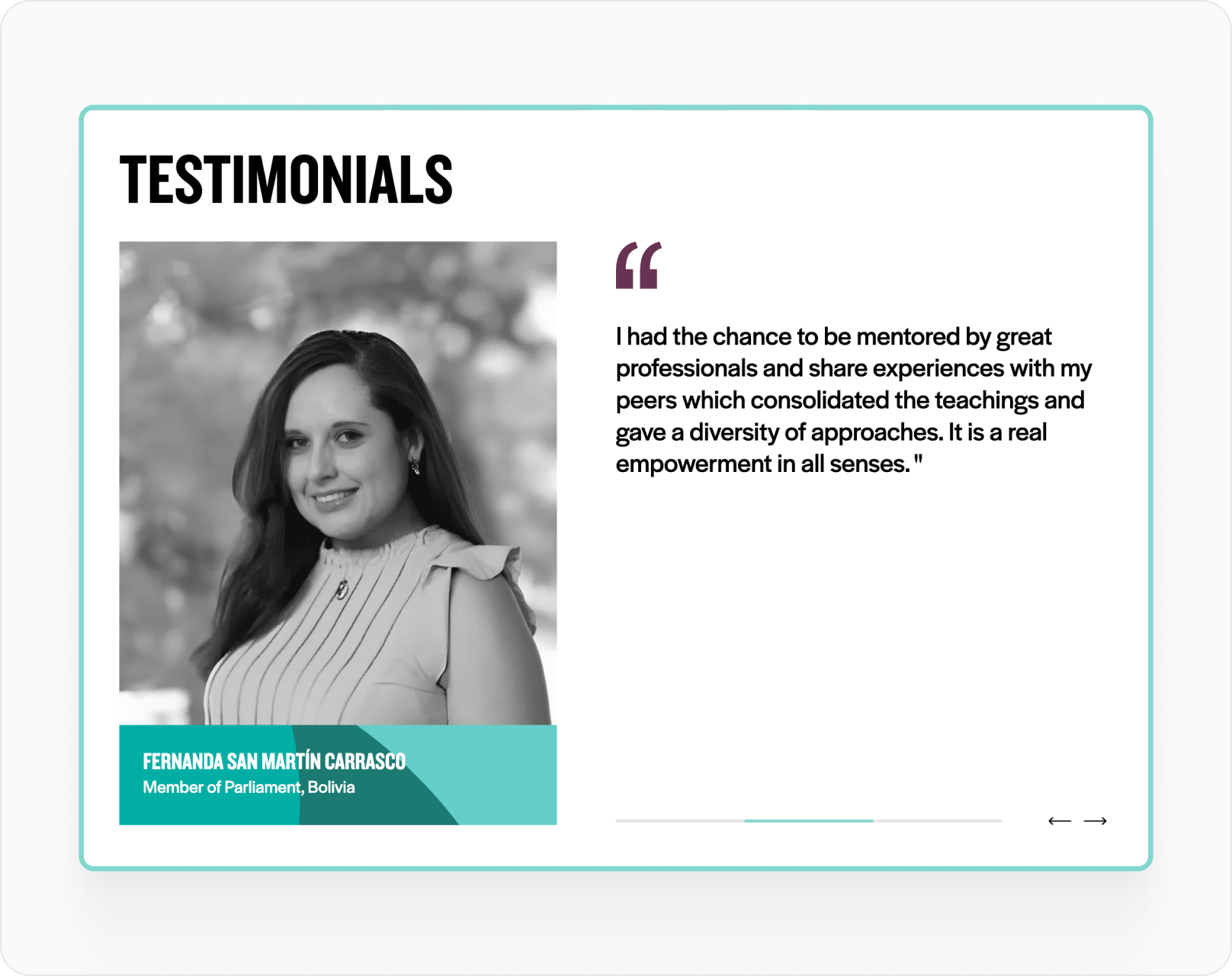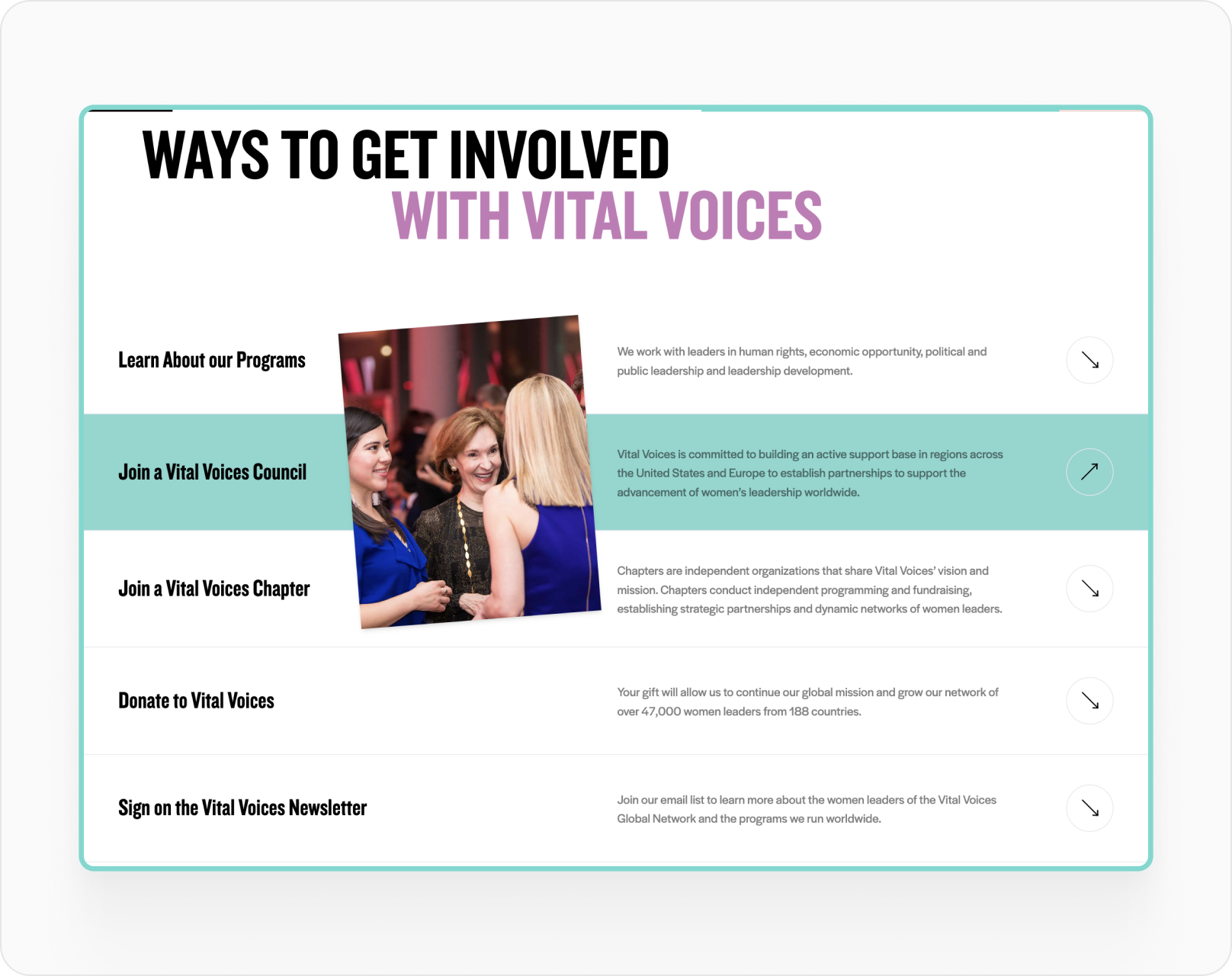Managing Nonprofit Projects with Vital Voices
USA
Non-profit
1 year
2 Full Stack Engineers, 1 .NET Engineer
Dedicated Development Team
Python, Django, React
-
40K
Active Users
-
185
Countries and Territories
-
4M
Monthly Recipe Views
About Client
Our client is a mid-sized nonprofit organization dedicated to empowering women through leadership programs. They strive to create a positive impact on communities worldwide by fostering strong female leaders.
The organization was facing challenges in managing their internal operations and effective communication with regional partners. Their existing systems were inefficient, and they sought a more custom solution to improve their overall productivity.
Our customer wanted to avoid the complexity of larger CRM platforms available on the market. They asked for an intuitive tool, so volunteers with minimal technical skills could perform their tasks without extra learning.
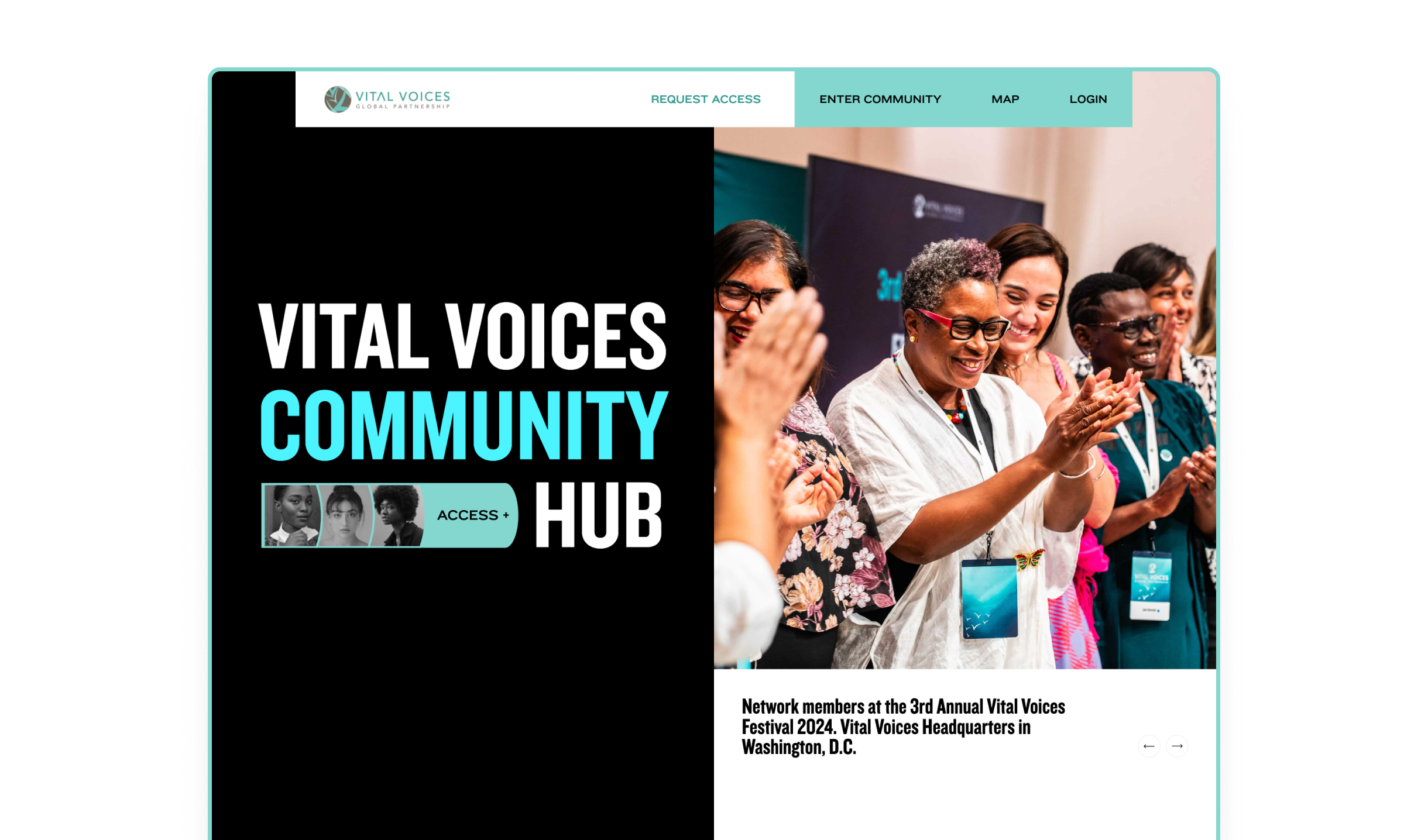
The Challenge
The initiation of this project was marked by several significant challenges, primarily stemming from the client’s initial lack of specific requirements. Due to this unclear situation, we had to choose a collaborative approach between our team and the client to jointly define the project scope and objectives.
- Undefined Requirements: Our team had to independently shape the product, starting by analyzing the client’s general needs and then increasing those into the structured requirements.
- Team Collaboration: Our team was supposed to have not only technical skills but also an understanding of the client’s cases, the ability to make independent decisions, and constantly communicate with the client to handle this successfully.
Unlike typical outsourcing projects with well-defined requirements, in this case, we worked as a product team, taking ownership of the entire product.
Goals
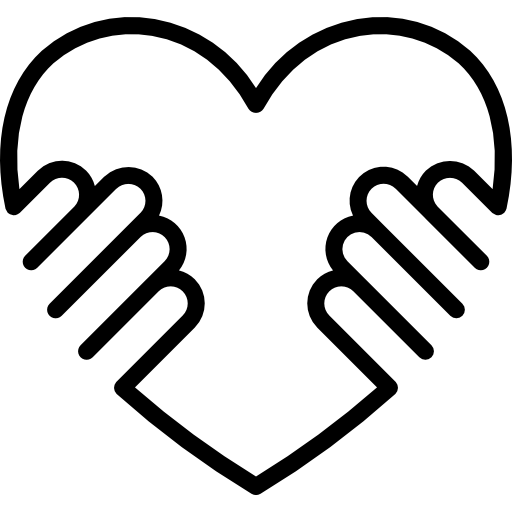
CRM for Non-Commercial Use
Our product was expected to align with non commercial projects specific requirements and social impact goals. This CRM is employed to manage volunteer programs, track donations, and communicate with donors. Also, the product must be accessible to all users, regardless of their technical expertise and device type.

Adaptive Architecture
We aimed to come up with a scalable CRM that can easily be adopted to various workflows of the non-profit organization. Our goal was to make CRM features, such as reporting and data management, customizable and therefore scalable for different non-commercial projects or teams.

Data Privacy and Access Control
We also decided to implement a multi-layered security system, including role-based access control and geographic location restrictions, to ensure maximum data protection. This guarantees that each user has access only to the information necessary to perform their duties, and that data is protected from unauthorized external access.
Dev Process
User Login
We implemented a secure authentication system to ensure only authorized users can access CRM. The developed system includes multiple user roles, each designed to meet specific needs. Super administrators have full control, while standard administrators and case managers have more limited permissions. The system is tailored to provide a personalized experience for each user, including referrals who can add their own data.
Data Management and Intuitive Interface
We’ve provided our client with a comprehensive directory to quickly access information about case managers and regional partners within the organization. Also, we added a user-friendly admin interface for managing user permissions and overseeing all the activities.
Archive Feature
We introduced an archiving feature. Keeping flexibility and security in mind, we created a secure archive where entities can be temporarily stored rather than permanently deleted. This allows users to quickly restore archived information when needed.
Design Process
Prioritizing Usability over Aesthetics
By prioritizing usability, we wanted to create a product that was easy to navigate, even for inexperienced users. Minimalist design and pre-built components ensured a clean and uncluttered interface.
Developing Flow and Mockups
Once the feature list was structured, we created mockups to help the client visualize the CRM system. This step was made to align our vision with theirs and ensure that all features are intuitive and user-friendly.
Aligning with Brand Identity
The product’s design was carefully aligned with the client’s existing brand book. We used the client’s color palette and overall visual style.
-
100K
Conference Attendees
-
+25K
Video Lectures
-
150K
Contributing Authors
Outcome
Responding to the client’s request for a simple and secure CRM, we created an easily operated system consisting only of the features used by the customer’s team in everyday work. Our years of experience working with nonprofits was the key to successfully developing this CRM.
After in-depth interviews, we figured out core CRM requirements. Such interviews helped us eliminate all of the typical but unnecessary features of CRMs available on the market. Instead, we focused only on the relevant functionality. By understanding our client’s needs, challenges, and workflows, we were able to tailor our services and develop a CRM system that improves the efficiency of managing volunteer programs and simplifies the process of reporting to donors.
We also added more value to the project by offering additional features that exceeded the client’s initial expectations.
“ Thanks to Jellyfish.tech’s expertise, the company has launched a platform version that has integrated the team’s designs, updates, and improvements. As a result, traffic has steadily increased. The team has proven themselves as genuine partners by demonstrating a deep commitment to the task.”
Is this case in line with what you have planned to build?
Let’s schedule a quick call to explore how we can support your business objectives
